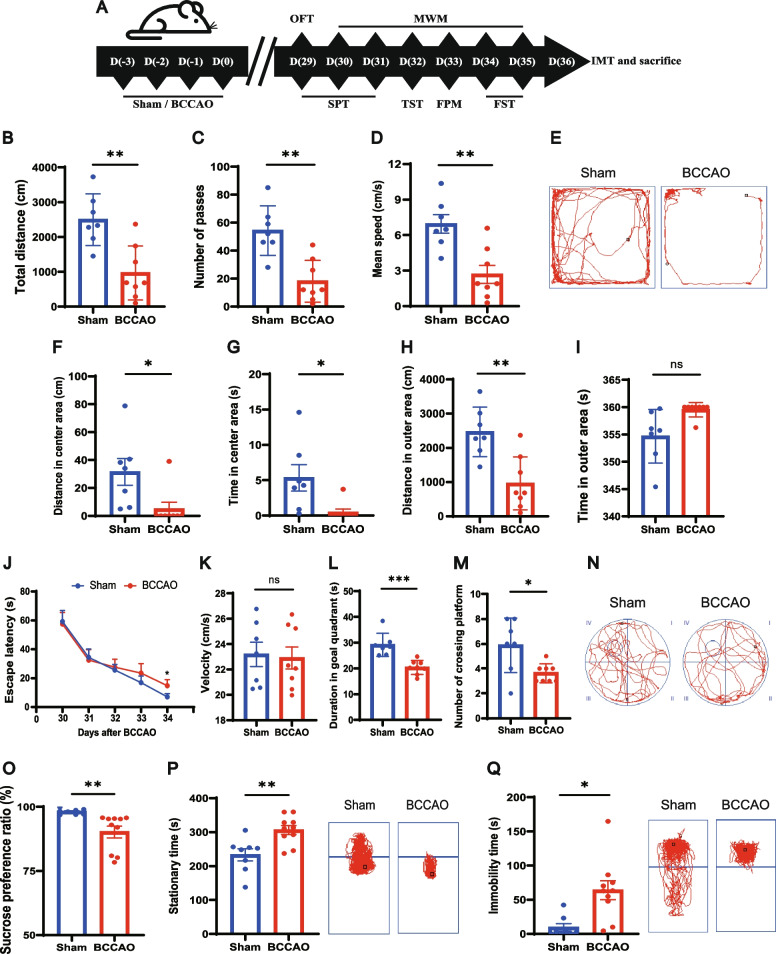Fig. 1.
BCCAO induces spatial learning and memory impairments and depressive-like behaviors. A Timeline of the experiment (BCCAO, bilateral common carotid artery occlusion. OFT, open-field test. MWM, Morris water maze test. SPT, sucrose preference test. TST, tail suspension test. FPM, fecal paraments measurement. FST, forced swim test. IMT, intestinal motility test). B–I Open-field test (n = 7 Sham, n = 8 BCCAO): B The total distance traveled by rats in the open field. C The frequency of grid-crossing. D The mean traveling speed. E Representative traces in the open-field test. Circle dot: start position; square dot: end position. F Distance traveled in the center area. G Time spent in the center area. H Distance traveled in the outer area. I Time spent in the outer area. J-N Morris water maze test (n = 7 Sham, n = 8 BCCAO): J Escape latency during the 5-day training period. K Mean speed in water in the spatial probe test. L Time spent in and M frequency of visits to the quadrant where the platform had previously been located. N Representative traces in the spatial probe test (the platform was previously located in the center of quadrant IV). Circle dot: start position; square dot: end position. O Sucrose preference test (n = 8 Sham, n = 10 BCCAO): percentage of sucrose water intake. P, Q Duration of immobility and representative traces in the tail suspension test (P) and forced swim test (Q) (n = 8 Sham, n = 10 BCCAO). The data represent the mean ± SEM, p < 0.05 was set as the threshold for significance. * p < 0.05, ** p < 0.01, *** p < 0.001 compared to the sham group

